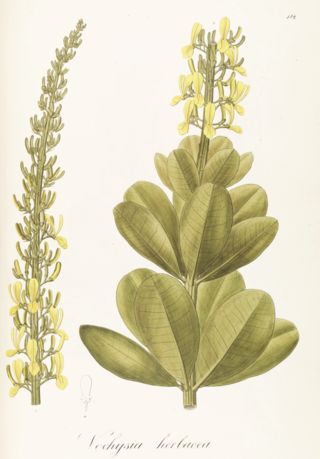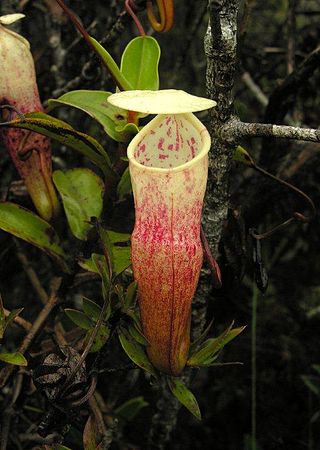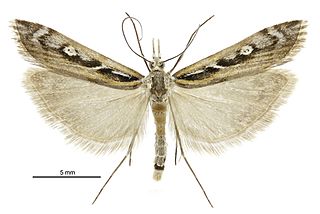
Maxwell House is an American brand of coffee manufactured by a like-named division of Kraft Heinz in North America and JDE Peet's in the rest of the world. Introduced in 1892 by wholesale grocer Joel Owsley Cheek, it was named in honor of the Maxwell House Hotel in Nashville, Tennessee, which was its first major customer. For nearly 100 years, until the late 1980s, it was the highest-selling coffee brand in the United States. The company's slogan is "Good to the last drop," which is often incorporated into its logo and is printed on its labels.

The brown-cheeked fulvetta, is included in the family Alcippeidae. It was earlier also known as the quaker babbler.

Vochysiaceae is a plant family belonging to the order of Myrtales.

Cheekwood is a 55-acre (22 ha) historic estate on the western edge of Nashville, Tennessee that houses the Cheekwood Estate & Gardens. Formerly the residence of Nashville's Cheek family, the 30,000-square-foot (2,800 m2) Georgian-style mansion was opened as a botanical garden and art museum in 1960.

Triuridaceae are a family of tropical and subtropical flowering plants, including nine genera with a total of approximately 55 known species. All members lack chlorophyll and are mycoheterotrophic. The heterotrophic lifestyle of these plants has resulted in a loss of xylem vessels and stomata, and a reduction of leaves to scales.

Ancistrocladus is a genus of woody lianas in the monotypic family Ancistrocladaceae. The branches climb by twining other stems or by scrambling with hooked tips. They are found in the tropics of the Old World.
Nepenthes danseri is a species of tropical pitcher plant. It is known only from the northern coast of Waigeo Island; plants from Halmahera, the largest of the Maluku Islands, are now recognised as belonging to a separate species, N. halmahera.

Nepenthes mira is a highland pitcher plant endemic to Palawan in the Philippines. It grows at elevations of 1550–1605 m above sea level.

Matthew Hilary Peter Jebb is an Irish botanist and taxonomist specialising in the ant plant genera Squamellaria, Myrmecodia, Hydnophytum, Myrmephytum and Anthorrhiza, as well as the carnivorous plant genus Nepenthes.
Martin Roy Cheek is a botanist and taxonomist at the Royal Botanic Gardens, Kew.

Nepenthes alba is a tropical pitcher plant endemic to Peninsular Malaysia. The specific epithet alba is derived from the Latin word albus, meaning "white", and refers to the colour of the upper pitchers.

The red-cheeked ground squirrel is a species of rodent in the family Sciuridae. It is commonly referred to as the red-cheeked ground souslik and there are several recognized subspecies. It is found in central Asia. Spermophilus brunnescens, Spermophilus heptneri and Spermophilus ungae are accepted as synonyms. There is some controversy over whether Spermophilus pallidicauda and Spermophilus brevicauda should be regarded as synonyms or full species.

The yellow-cheeked chipmunk, also known as the redwood chipmunk, is a species of rodent in the squirrel family, Sciuridae. It is endemic to areas near the coast of northern California in the United States where it inhabits coastal coniferous forest.
Kupea martinetugei is a species of plant in the Triuridaceae family. It is endemic to Cameroon. Its natural habitat is subtropical or tropical moist lowland forests. It is threatened by habitat loss.

Kupea is a monotypic moth genus of the family Crambidae described by Alfred Philpott in 1930. It contains only one species, Kupea electilis, also known as Kupe's grassmoth, which is endemic to New Zealand. It is classified as Nationally Vulnerable by the Department of Conservation. The female of the species was first discovered in 2012.
Nepenthes ultra is a tropical pitcher plant native to the Philippine island of Luzon, where it grows at low altitude on ultramafic soils.

Nepenthes extincta is a tropical pitcher plant native to the Philippines. It is known only from Surigao del Sur, Mindanao, where it has been recorded at c. 400 metres (1,300 ft) altitude.

Nepenthes kitanglad is a tropical pitcher plant native to the Philippines. It is known only from Mount Kitanglad in Bukidnon Province, Mindanao, where it has been recorded as an epiphyte in mossy forest at 1800–2100 m altitude. This species belongs to the informal "N. alata group", which also includes N. alata, N. ceciliae, N. copelandii, N. extincta, N. graciliflora, N. hamiguitanensis, N. kurata, N. leyte, N. mindanaoensis, N. negros, N. ramos, N. saranganiensis, and N. ultra. These species are united by a number of morphological characters, including winged petioles, lids with basal ridges on the lower surface, and upper pitchers that are usually broadest near the base.













